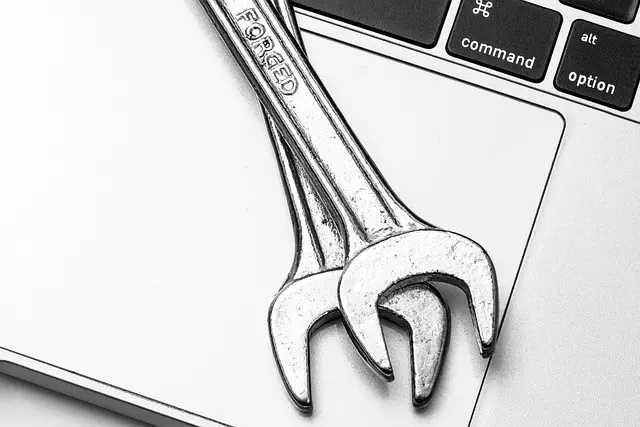Sewer line issues in Toledo demand meticulous care, with common culprits including age decay, tree roots, corrosion, and burst pipes. Modern repair techniques, like hydro-excavation, relining, and patch repairs, minimize excavation, reduce restoration times, and lower costs. A blend of traditional tools and modern technology, such as fiber optic cameras and water cutting, ensures precise non-destructive repairs. To effectively address plumbing issues, research reputable Toledo sewer line repair companies with experience in modern methods and licensed professionals using up-to-date Sewer Line Repair Tools.
In the dynamic city of Toledo, efficient sewer line repair is essential for maintaining a healthy and sustainable urban environment. This article delves into the world of sewer line repairs, exploring both traditional and modern methods. We’ll dissect the causes of common damage, highlight crucial tools and equipment used in the process, and provide a step-by-step guide for effective troubleshooting. Furthermore, we’ll emphasize the importance of selecting the right sewer line repair company in Toledo, incorporating relevant SEO keywords to enhance accessibility for local residents seeking reliable solutions.
- Understanding Sewer Line Damage and Its Causes
- Traditional vs Modern Repair Methods
- Common Sewer Line Repair Tools and Equipment
- Step-by-Step Guide to Sewer Line Repairs
- Selecting the Right Sewer Line Repair Company in Toledo
Understanding Sewer Line Damage and Its Causes

Sewer lines, vital components of our urban infrastructure, are often overlooked until they encounter issues. Damage to these underground networks can stem from various factors, each demanding specific attention during repair processes. Common causes include age-related deterioration, tree root intrusion, corrosion, and burst pipes, often exacerbated by ground movement or extreme weather conditions. Recognizing these initiators is crucial for effective sewer line repair in Toledo, utilizing appropriate tools and methods tailored to the problem.
Professionals employ advanced techniques and Sewer Line Repair Tools to assess the extent of damage, ensuring longevity of repairs. Methods vary based on the severity: from relining damaged sections with durable materials like fiber glass or PVC to complete replacement. Understanding these causes and repair approaches equips homeowners and professionals in Toledo to address sewer line concerns efficiently, maintaining a robust drainage system.
Traditional vs Modern Repair Methods

In the realm of sewer line repair, the evolution from traditional to modern methods has brought about significant advancements in efficiency and effectiveness. Traditional techniques often involved excavating large sections of ground to access and replace damaged segments, leading to lengthy downtime and increased costs due to labor-intensive processes. This method can cause considerable disturbance to surrounding areas, especially in urban settings like Toledo where space is limited.
Modern repair methods, on the other hand, leverage innovative tools and technologies designed to minimize excavation and disruption. Advanced sewer line repair tools such as hydro-excavation, relining, and patch repairs enable technicians to access and fix issues from the surface, reducing the need for extensive digging. These modern approaches not only shorten restoration times but also lower costs associated with labor and material. As a result, residents and businesses in Toledo can expect faster recovery times and less interference with their daily activities when sewer line repairs are necessary.
Common Sewer Line Repair Tools and Equipment

When it comes to sewer line repair in Toledo, a variety of specialized tools and equipment are essential for the job. Plumbers often rely on traditional methods such as hand tools like pipe wrenches, pliers, and augers for initial assessments and clearing blockages. These manual tools are invaluable for navigating tight spaces and diagnosing issues within the line.
For more complex repairs, however, modern technology plays a significant role. Hydro-excavation equipment, also known as water cutting or vacuum excavation, is a game-changer in sewer line repair methods. This non-destructive technique uses high-pressure water and vacuums to gently remove soil around the pipe without damaging it, making precise repairs possible. Additionally, fiber optic cameras provide plumbers with real-time visual data, allowing them to identify issues from within the line, ensuring more effective and targeted sewer line repair tools and techniques are employed.
Step-by-Step Guide to Sewer Line Repairs

Repairing a sewer line is a critical task that requires careful planning and the right tools to ensure effective and long-lasting results, especially when it comes to Sewer Line Repair Toledo. Here’s a step-by-step guide to help you navigate this process efficiently:
1. Identify the Problem: Start by locating the faulty section of the sewer line. Look for signs like clogs, overflows, or unusual smells that could indicate a breach or blockage. This initial step is crucial in targeting the repair effort.
2. Gather Sewer Line Repair Tools: Depending on the extent of damage, you’ll need specific tools tailored to different Sewer Line Repair Methods. Common tools include pipe wrenches for tight connections, cutting tools for removing damaged sections, and a range of replacement pipes or patches designed for sewer lines.
3. Isolate the Area: Before beginning any repair work, it’s vital to isolate the affected area to prevent further contamination or damage. This might involve shutting off water supplies and temporarily disconnecting the sewer line from the main system.
4. Remove the Damaged Section: Carefully cut out the damaged portion of the sewer pipe using appropriate tools. Ensure that you have the right size replacement pipe or patch to fit seamlessly into the gap, maintaining the structural integrity of the line.
5. Clean and Prepare: Thoroughly clean the area where the new section will be joined to prevent blockages or corrosion. Use specialized cleaning tools designed for sewer lines to ensure there’s no residual debris that could hinder the repair’s effectiveness.
6. Install the Replacement: Fit the replacement pipe or patch securely, using the appropriate sealing compounds to create a watertight seal. Ensure all connections are tight and aligned correctly.
7. Test and Verify: After completing the repair, test the line for any leaks or blockages by slowly running water through it and observing for signs of issues. Once verified, restore the isolated area back to its original functioning state.
Selecting the Right Sewer Line Repair Company in Toledo

When it comes to selecting a sewer line repair company in Toledo, choosing the right one is crucial for ensuring efficient and effective resolution of your plumbing issues. Start by researching local companies that specialize in Sewer Line Repair Toledo. Look into their experience, the methods they employ, and the types of Sewer Line Repair Tools they use. Reputable companies will offer a range of repair options, from traditional dig-and-replace to more modern, non-invasive techniques like relining.
Check for customer reviews, certifications, and warranties to gauge their reliability. You want a company that employs licensed professionals using up-to-date Sewer Line Repair Methods to avoid further damage or costly follow-up repairs. Additionally, consider their response time and availability for emergency services. A reliable sewer line repair company in Toledo should be equipped to handle your problem promptly, minimizing disruptions to your home or business.


